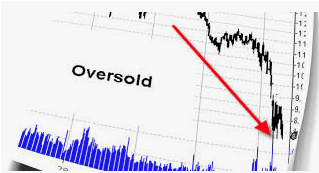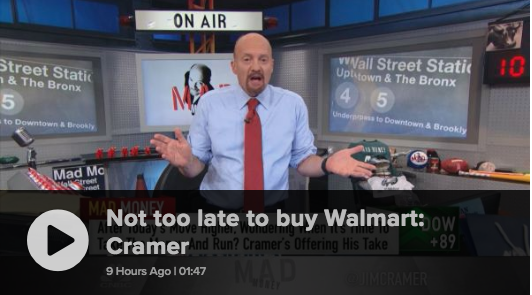With the S&P 500 clearing the 2,700 level and the Nasdaq clearing the 7,000 level there is but one more milestone to have been achieved. That milestone achievement will come from the Dow Industrials clearing or touching the 25,000 level. Ahead of this likely accomplishment we expect to see some key components of economic data come into focus. The ADP private payrolls showed strong growth in December 2017. Employers added 250,000 jobs. November’s tally was revised down by 5,000 jobs, however. Economists were largely expecting the private sector payroll report to show that 190,000 jobs were created during the month of December. The report comes ahead of the more heavily weighted Nonfarm Payroll report this Friday. For all of your minute-by-minute and day-by-day economic reporting figures please review the Economic Data tab.

Oil prices hit a three-year high on Thursday, with protests in Iran adding a persistent geopolitical risk premium to the market. Continued protests in Iran may lead to disruption for crude output from OPEC’s third-largest producer, which would limit global oil supply and support a rise in oil prices. Outside of the Iranian issues, analysts are also keeping an eye on the growing tensions in Venezuela. Venezuelan oil production is falling by around 50,000 barrels a month cite some analysts as they fear the nation will collapse in 2018. West Texas Intermediate futures rose 12 cents, or 0.2%, to $61.75, on track for its highest settlement level since December 2014.
On its first trading day of the New Year, The Nikkei closed up 3.3%, hitting a 26-year high and logging its biggest daily gain since Nov. 10, 2016. Hong Kong and China outperformed most Asian markets with gains of, 0.6% and 0.5%, respectively. The Hang Seng Index touched a new 10-year high Thursday and notched its first eight-day winning streak since July.
Corporate News
In corporate headlines, J.C. Penney released an update on its 2017 Holiday results. The retailer’s comparable store sales for the combined nine-week period ending December 30, 2017 increased 3.4 % over the same period last year. The Company also reaffirmed all components of its most recent full-year financial guidance for fiscal 2017.
We are very encouraged with our overall comp sales performance during the holiday season, which was led by home, beauty and fine jewelry. Additionally, our apparel categories continue to demonstrate improved comp performance, particularly in women’s and kids. We are also pleased by our e-commerce business that continues to outpace prior year results with double-digit sales growth, largely driven by sought-after gifting categories such as fine jewelry, home decor and luggage, toys, boots and athletic footwear. Our ability to execute e-commerce fulfillment from 100% of our brick and mortar stores helped fuel the growth in e-commerce for the holiday season. We remain confident that our strategic initiatives are taking hold and resonating with customers,” said Marvin R. Ellison, chairman and chief executive officer of JCPenney.
CVS Health Corp. set guidance for 2018 today, saying it expects revenue growth of 0.75% to 2.5 percent. The company is also expecting to benefit from the tax reform signed into law in December, which should reduce its 2018 tax rate to about 27%, equal to an increase in cash flow of about $1.2 billion. CVS revised its fourth-quarter outlook, however, citing softer margin performance in its PBM client and retail network. It now expects EPS for the quarter to come in at the low end of its $1.88 to $1.92 range.
Tesla Inc. said it delivered 29,870 vehicles in the fourth quarter, slightly less than expectations, and pushed back a Model 3 production target to the second quarter of this year. The technology and auto manufacturer said it now expects to reach a production rate of 5,000 Model 3 sedans a week by the end of the second quarter. Tesla had previously told shareholders it would ramp up Model 3 production to 5,000 sedans a week in 2017 and then to 10,000 a week in 2018, but production shortcomings offered back in October 2017 had led the company to push back its 2017 goal to late in the first quarter of 2018. This is the Tesla mantra; if at first you don’t succeed, continue to lift investor sentiment with unrealistic goals and objectives.
In December, Costco’s same-store sales grew 11.5%, topping Wall Street’s estimate of just 8.1% growth and Gordon Haskett analyst Chuck Grom’s forecast of 9% growth. According to Grom, December was the fifth-straight month Costco reported double-digit total sales growth, which the analyst said is a “testament to the model, which is generating strong comps from both new and mature units.” Total net sales at Costco were up 14.3% year over year in December to $14.94 billion. December’s results included a 150-basis point benefit from foreign exchange, a 110-basis point benefit from higher gas prices over last year and a 250-basis point gain owed to the extra shopping day in the month given when New Year’s Day fell. Traffic trends at Costco were impressive, too, up 6.6% globally and 6.4% in the U.S. Digital sales growth was up 33.3% in December. The e-commerce segment showed acceleration ahead of the trailing 4-month average of 31.5%. If investors see any pullback in the share price near-term, well, the results speak for themselves. The average analyst price target rests around $199 per share with the forward PE multiple at 30. While the PE is expensive when compared to its peers in the retail sector that has always been the case for shares of COST.
And then there was Macy’s, right? Macy’s Inc. said that same-store sales during the months of November and December 2017 rose 1% on an owned basis and were up 1.1% on an owned-plus-licensed basis. Macy’s Chief Executive Jeff Gennette says the same-store sales result sets the retailer up “for a positive fourth quarter.” The company saw double-digit growth online for a 34th consecutive quarter and improved holiday sales across Macy’s, Macy’s Backstage, Bloomingdale’s and its outlet, and the beauty brand Blue Mercury. Most analysts had forecasted a decline in Macy’s SSS during the quarter. Included in announced cost management efforts will be staffing adjustments, with some stores seeing reductions as others hire, and 11 store closures in early 2018. Four of those closures were previously announced. Stores will close in Miami, Los Angeles, San Francisco and other cities nationwide. Macy’s expects annual expense savings to total $300 million beginning fiscal 2018, and one-time charges of $160 million, or about $.33 per share, which will be booked in the fourth quarter. Macy’s now expects full-year adjusted earnings per share of $3.59 to $3.69 including tax reform measures, versus previous guidance of $3.38 to $3.63. The company expects same-store sales on an owned basis to decline between 2.4% and 2.7%, and a decline between 2% and 2.3% on an owned-plus-licensed basis. Sales are expected to be down between 3.6% and 3.9%. The FactSet consensus is for full-year EPS of $3.44 and a same-store sales decline of 3.4%. Macy’s expects a non-cash tax benefit in fiscal 2017 of $550 million to $650 million from the federal tax rate reduction.
Stay tuned for our Half-Time Show and check out our chat forums .









